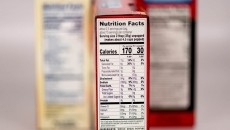Latin American ‘value’ shoppers split on higher quality vs. larger quantity

Inflation for Latin America, excluding Venezuela which is nearing bell-curve skewing hyperinflation levels, is expected to be 6.3% year, according to FocusEconomics. However, it adds, much of this improvement compared to prior years comes from lower inflation in Brazil, and for some consumers it is not enough to offset the effects of years of higher rates.
For example, a closer look at Mexico reveals inflation has steadily increased over the past year from 3.4% at the end of 2016 to 6.3% in the second quarter of 2017, “placing greater pressure on consumer spending power,” according to Nielsen, based on data from its Q2 2017 Quarter by Numbers reports.
In response, the consumer research firm said, sales of fast moving consumer goods, including packaged foods, in Mexico remain slow despite other improved economic indicators.
One consumer response to this pressure has been to shop discount and whole sale outlets, which Nielsen notes allows them to find retail brands and lower prices. Another increasingly common strategy Nielsen observed is consumers buying in volume during promotions or seeking multi-packs and larger pack sizes.
But the market research firm advises manufacturers and retailers to “avoid the temptation to overly focus on discounts and low-end brands,” and rather, “focus on optimizing their pricing strategies, aiming to sell their products at the right price without doing so at the expense of profitability.”
Invest in innovation, premium products
It also advises firms to invest in innovation and develop products for which consumers will trade up and pay more – such as value-added and premium products.
This advice is based on the growing middle class, younger generations coming into their spending power and more consumers looking for and willing to pay more for products that will benefit their health, Nielsen notes in a recent blog post.
Tailor marketing for best results
To take advantage of these trends and boost sales, Nielsen advises manufacturers to tailor premiumization and marketing by age group, goal and country.
For example, Nielsen points out that 50% of Baby Boomers and the Silent Generation in Latin America are more inclined to pay more for products that will support their health, such as organic and natural products, but Millennials and Generation X are more focused on products that will make them feel “good and successful.”
For the food and beverage industry, this means their best targets are middle-aged and older shoppers who are more likely to say they are looking for premium grocery items, according to Nielsen.
Specifically, Nielsen found 34% of Generation X said they want premium dairy products, a figure that jumps to 42% among Baby Boomers, but isn’t on the radar of Millennials. Similarly, 33% of Generation X wants premium rice and grains and 34% of Baby Boomers say they want premium tea and coffee, according to Nielsen’s Pockets of Growth – Latin America report published in June.
















